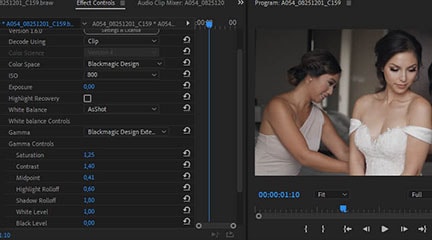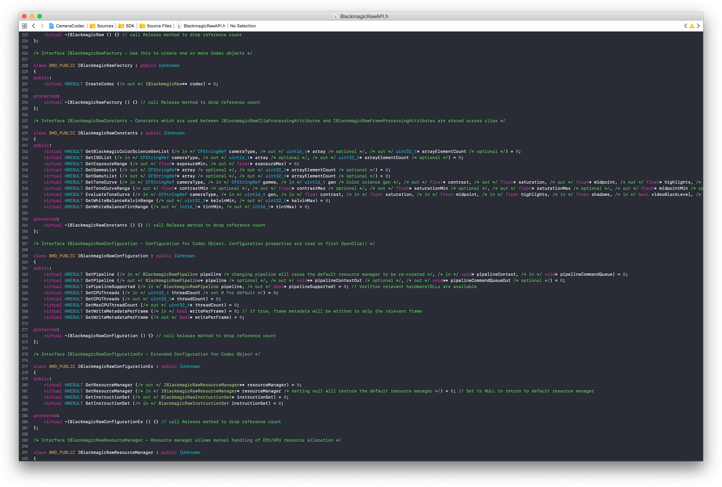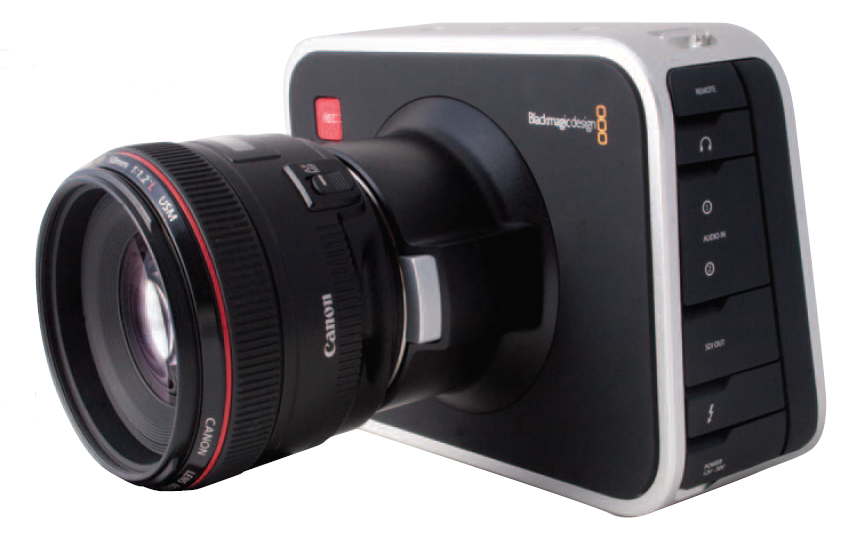Cover image via
- Blackmagic Raw Player Download
- Blackmagic Raw Plugin After Effects
- Blackmagic Raw Pc
- Blackmagic Raw Adobe After Effects
- Blackmagic Raw Speed
Blackmagic Studios announced their new RAW codec September 14th 2018, claiming it is a “next generation codec.” So is it?
What is Blackmagic RAW? How does it work? What can it do that other RAW codecs can’t? In the following article, we’ll answer these questions and more, including how it will improve RAW workflows.
So, let’s take a look at Blackmagic RAW. (Here’s the original press release.)
First solution: you export your RAW Parameters in the.sidecar by pressing the button 'Save Sidecar' in the Source Settings BEFORE sending the BRAW file to After Effects via Dynamic Link, After Effects will load the values inside this Sidecar file by default (because of the 'Camera Metadata' decoding mode as described previously).
- Black Magic, the creators of the BM Cinema Camera, have released a series of DNG image sequences in conjunction with opening a new forum to share and discuss working with their products.
- Blackmagic raw after effects keyword after analyzing the system lists the list of keywords related and the list of websites with related content, in addition you can see which keywords most interested customers on the this website.

The Basics of Blackmagic RAW
Blackmagic RAW is a visually lossless codec. As we’ve covered before, this means that the footage gets compressed into a vastly smaller data set that will later decode into a visually identical image to the uncompressed data.
While this kind of technology is far from new, Blackmagic is touting some impressive new tech. They claim that their new RAW codec will offer equal or better image quality to any other codec on the market, but at file sizes similar to those you’ll find in lossy encoding techniques, such as h.264.
In addition to file size, Blackmagic is claiming that their RAW codec will have equal or greater image quality, bit depth, dynamic range, and control as any other RAW codec. This is partly thanks to a new advanced de-mosaic process that splits the decoding workload between your computer and the camera recording the footage. This allegedly allows for unrivaled capture and playback speeds over any other RAW codec.
Blackmagic has distanced itself from ProRes Raw by opting for a more inclusive, cross-platform, open development strategy. While Apple requires manufacturers to pay licensing fees to use their technology, Blackmagic has included a Software Developer’s Kit (SDK) that will enable manufacturers of cameras, external recorders, and post-production programs and plugins to take full advantage of Blackmagic RAW immediately. This appears to be a direct shot at ProRes Raw, which (despite debuting in April) has yet to see full industry acceptance due to Apple’s tight grip on its patents.

Beyond the fancy new tech, Blackmagic touts best-in-class performance over the competition for an array of modern imaging and playback requirements:
- High-resolution recording and playback.
- High frame rate recording and playback.
- HDR recording and playback.
- Codec flexibility for various cameras and sensors.
- Simultaneous recording of proxy files.
- Cross-platform support for every step in the imaging and post-process pipeline.
Blackmagic RAW information is stored in the “.braw” container, and additional outputs are stored as “.sidecar” files. We’ll come back to this later.
But for now, let’s get an idea of what’s under the hood.
What Blackmagic Brings to the Table

Blackmagic RAW draws from an impressive array of tech to achieve its goals. Here are some of the highlights it brings to the table for RAW workflows.
Speed
At the heart of Blackmagic’s design principles for this new RAW offering is speed. Blackmagic RAW should beat out all other codecs thanks to a few handy tricks and innovations.
Advanced De-Mosaic
Blackmagic has re-thought the way the recording device and computer handle different tasks in the imaging pipeline. Blackmagic RAW introduces a new “Advanced De-Mosaic” process, which will eliminate the need for de-bayering and other image processing when accessing the footage on a computer or editing device. In addition to De-Mosaicing, noise management, sensor profiling, and new edge reconstruction algorithms have moved in-camera.
This should result in lightning-fast capture and playback speeds without sacrificing RAW’s post-production flexibility.
Playback and Editing Speed
Blackmagic RAW was designed to accelerate post-production workflows. It is multi-threaded, meaning that even at the clip level, you will still be using your fancy processor. Further, it also offers GPU acceleration for any graphics card, operating system, or editing system. Blackmagic has future-proofed its codec by baking performance scaling in from the get-go.
In contrast to many other RAW codecs, Blackmagic RAW footage is stored as individual clips rather than as image sequences, vastly reducing post-production headaches.
Flexibility
Beyond simple read/write times, Blackmagic RAW brings some serious upgrades to RAW workflows and gives users a multitude of options for their productions.
Full Production Pipeline
Blackmagic RAW was designed from the ground up with the full post-production pipeline in mind. As opposed to many other RAW codecs, no transcoding or complicated round-tripping will be necessary — you can use Blackmagic RAW to record, edit, color, and do SFX work without issue.
Options for Any Production
Blackmagic RAW offers compression ratios ranging from 3:1 all the way up to 12:1 — perfect for anything from a big-budget feature to your cousin’s wedding.
Simultaneous Proxy Recording
While not the most innovative item in this list, Blackmagic RAW offers the same flexibility as some of the biggest RAW codecs by allowing simultaneous recording at multiple compression ratios. The full-fidelity footage is stored as “.braw,” while any additional proxy outputs will be saved as “.sidecar.”
CBR and CQ
In addition to options for compression ratios, Blackmagic has developed an option for prioritizing file size or image quality. “Constant BitRate” functions the same as any other codec by placing a cap on the maximum data rate of incoming footage from the sensor. “Constant quality” inverts this by un-capping the bitrate in order to preserve fine details even in complicated shots.
RAW Player
While dedicated players and RAW viewers have become the norm for most RAW codecs, Blackmagic claims to offer a little more with theirs. The Blackmagic RAW Player ensures that you see every pixel as you recorded it, regardless of how beefy your machine is.
Metadata
Blackmagic RAW’s metadata recording has been optimized for modern post-production. This means a new level of easy-to-understand clip information for all your RAW footage.
Open Standard
Blackmagic has employed an open-standard, cross-platform, license-free approach to their new RAW codec. This means rapid integration into your editing program, external recorder, camera, and so on — regardless of whether you use Apple, Windows, or Linux. Even if this were the only advantage, it would still be enough for me to say that Blackmagic RAW beats ProRes Raw.
Fidelity
The speed and flexibility offered by Blackmagic RAW don’t come at the cost of image quality.
Q0 and Q5
Even more than compression options and simultaneous proxy recording, Blackmagic RAW’s Q0 and Q5 should dramatically deepen the resultant image quality of your footage. The “Q” in both Q0 and Q5 stands for “quantization.” We’ve covered quantization a couple times before, but all you need to know is that quantization always results in lost data.
Blackmagic Raw Player Download
Q0 employs “Minimum Quantization,” resulting in the highest-possible image fidelity, while Q5 employs moderate quantization for better encode times and file sizes.
Gen 4 Color Science
Without delving too far into the technical details, Blackmagic RAW employs a non-destructive 12-bit non-linear color space to produce “extremely accurate skin tones and gorgeous, lifelike colors” that should rival the color reproduction of the best cameras on the market today.
While many Raw codecs employ LUTs for their colorometry, Blackmagic RAW uses its highly advanced metadata to preserve vital chroma information.
Blackmagic RAW is currently in beta and is completely free to download and try — as long as you have the Ursa Mini Pro 4.6k or the beta release of Resolve 15.1. No doubt, Blackmagic is buying time for third-party vendors to implement support for the codec. When the official release comes, expect a slew of supported devices, programs, and plugins.
Blue to go everywhere sky. Everything I’ve seen so far about Blackmagic RAW leads me to the strong conviction that this will be the RAW codec to beat in the coming years. It stands to unseat even Apple’s brand new ProRes Raw due to Blackmagic’s open-source, license-free, cross-platform stance with third-party vendors and manufacturers. This open model means more tools in the hands of filmmakers right out of the gate.

What a concept — developing solutions for the end user over complex licensing schemes designed to maximize profits.
I know which company gets my support.
Blackmagic Raw Plugin After Effects
All images via Blackmagic Studios.
Looking for more industry updates? Check out these articles.
One of the big benefits of the Blackmagic cameras is their ability to shoot raw – lossless Cinema DNG files that capture an incredible range of detail. But encoding those files into a useable format for editing can be tricky, especially if your computer won’t run the processor-intensive DaVinci Resolve which ships with the camera.
You can usually turn to the Adobe Creative Suite when faced with intractable transcoding problems, and sure enough After Effects provides one solution for raw to ProRes conversion.
I’ll take you through it, step by step. Let’s assume you’ve been shooting on a Blackmagic Cinema Camera and you have some 2.5K raw shots which you want to drop into your edit timeline alongside 1080P ProRes 422HQ material.
1. In After Effects’ launch window, select New Composition. A dialogue box will appear in which you can spec up your project. For this example, we’re going to choose the standard HDTV resolution of 1920×1080. It’s critical that you get your frame rate right, or your audio won’t sync. Click OK once you’ve set everything to your liking.
2. Now go to the File menu and select Import > File. Navigate to the raw material on your hard drive. The BMCC creates a folder for each raw clip, containing the individual Cinema DNG frames and a WAV audio file. Select the first DNG file in the folder and ensure that Camera Raw Sequence is ticked, then click OK.
3. You’ll then have the chance to do a basic grade on the shot – though with only the first frame to judge it by.
4. Use Import > File again to import the WAV audio file.
5. Your project bin should now contain the DNG sequence – shown as a single item – along with the WAV audio and the composition. Drag the DNG sequence into the main viewer window. Because the BMCC’s raw mode records at a resolution of 2.5K and you set your composition to 1080P, the image will appear cropped.
6. If necessary, zoom out (using the drop-down menu in the bottom left of the Composition window) so you can see the wireframe of the 2.5K image. Then click and drag the bottom right corner of that wireframe to shrink the image until it fits into the 1080P frame. Hold down shift while dragging to maintain the aspect ratio.
7. Drag the WAV audio onto the timeline, taking care to align it precisely with the video.
Blackmagic Raw Pc
8. Go to Composition Settings in the Composition menu and alter the duration of the composition to match the duration of the clip (which you can see by clicking the DNG sequence in the project bin).
9. Go to the Composition menu again and select Add to Render Queue. The composition timeline will give way to the Render Queue tab.
10. Next to the words Output Module in the Render Queue, you’ll see a clickable Lossless setting (yellow and underlined). Click this to open the Output Module Settings.
11. In the Video Output section, click on Format Options… We’re going to pick ProRes 422 HQ, to match with the non-raw shots we hypothetically filmed. Click OK to close the Format Options.
12. You should now be back in Output Module Settings. Before clicking OK to close this, be sure to tick the Audio Output box to make sure you don’t end up with a mute clip. You should not need to change the default output settings of 48kHz 16-bit stereo PCM.
Blackmagic Raw Adobe After Effects
13. In the Render Queue tab, next to the words Output to you’ll see a clickable filename – the default is Comp1.mov. Click on this to bring up a file selector and choose where to save your ProRes file.
14. Click Render (top far right of the Render Queue tab). Now just sit back and wait for your computer to crunch the numbers.
Blackmagic Raw Speed
I’ve never used After Effects before, so there are probably ways to streamline this process which I’m unaware of. Can anyone out there suggest any improvements to this workflow? Is it possible to automate a batch?
